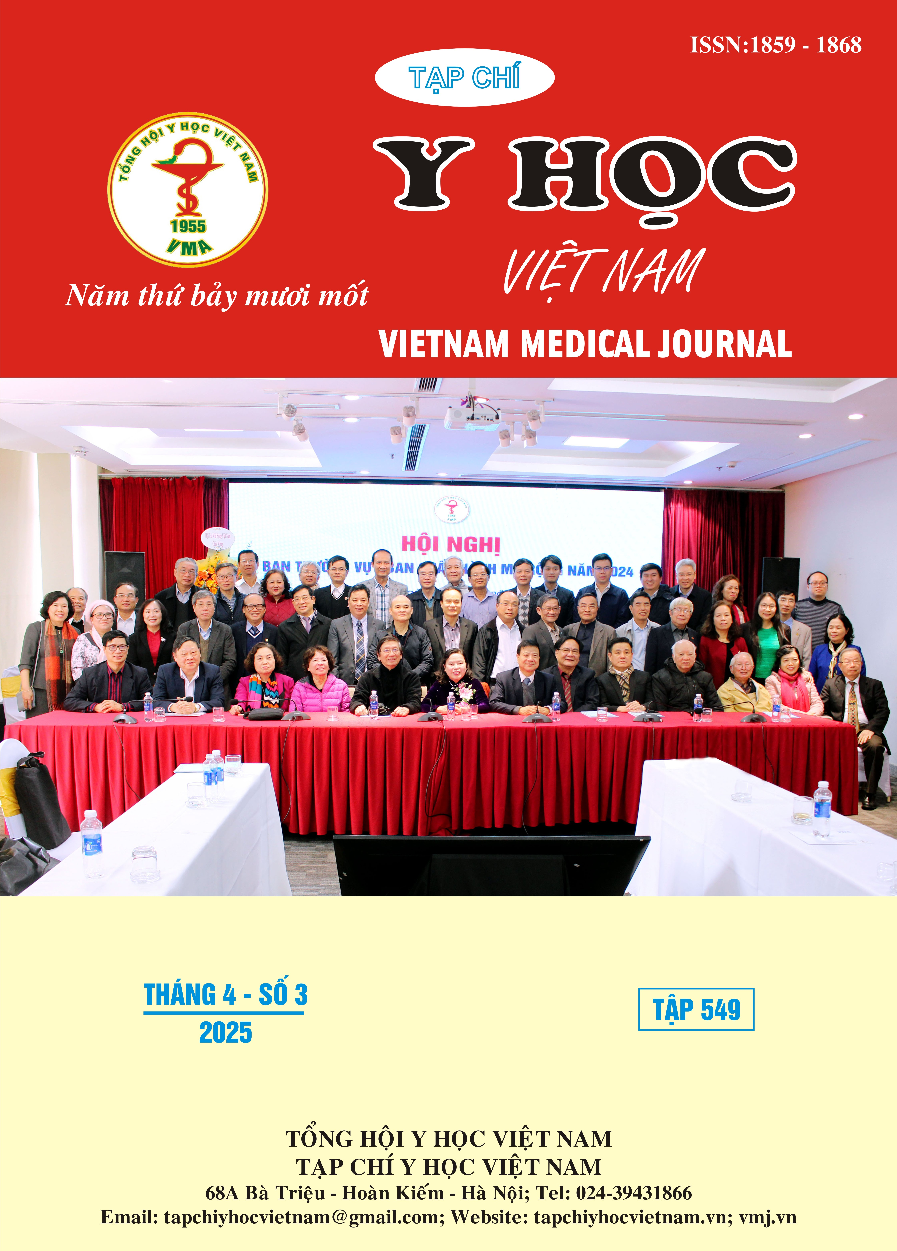THE RESULTS OF PERCUTANEOUS ULTRASOUND-GUIDED BIOPSY IN THE DIAGNOSIS OF ATYPICAL HEPATOCELLULAR CARCINOMA AT THANH HOA ONCOLOGY HOSPITAL
Main Article Content
Abstract
Hepatocellular carcinoma (HCC) is a common type of cancer and has a high mortality rate. Based on the enhancement characteristics on imaging diagnostics combined with AFP concentration allows diagnosis of the disease. However, about 40% of tumors exhibit atypical enhancement, requiring biopsy for diagnosis. Percutaneous biopsy is a technique to take samples for testing in these cases. Purpose: Evaluate the results of percutaneous ultrasound-guided biopsy in diagnosing atypical hepatocellular carcinoma on computed tomography. Methods: Descriptive cross-sectional study on 27 patients with atypical enhancement images, underwent percutaneous ultrasound-guided biopsy and post-operative pathological diagnosis of HCC. Research at Thanh Hoa Oncology Hospital from January 2022 to April 2023. Results: There were 03 cases requiring a second biopsy (11.1%). The accuracy rate after the first biopsy was 88.9%, after the second biopsy it was 96.3%. In 90% of biopsy cases, 3 or more sample cores were taken and there was only 1 case of post-biopsy complications (hematoma under the liver capsule). Conclusion: Percutaneous ultrasound-guided biopsy is a highly accurate method, has very few complications, and is effective in diagnosing atypical HCC.
Article Details
Keywords
Atypical Hepatocellular carcinoma, percutaneous ultrasound-guided biopsy
References
2. European Association for the Study of the Liver, European Organisation for Research and Treatment of Cancer. EASL–EORTC Clinical Practice Guidelines: Management of hepatocellular carcinoma. Journal of Hepatology. 2012; 56(4): 908-943. doi:10.1016/j.jhep.2011. 12.001
3. Marrero JA, Kulik LM, Sirlin CB, et al. Diagnosis, Staging, and Management of Hepatocellular Carcinoma: 2018 Practice Guidance by the American Association for the Study of Liver Diseases. Hepatology. 2018;68(2):723-750. doi:10.1002/hep.29913
4. Sherman M, Bruix J. Biopsy for liver cancer: How to balance research needs with evidence‐based clinical practice. Hepatology. 2015;61(2):433-436. doi:10.1002/hep.27563
5. Durand F, Regimbeau JM, Belghiti J, et al. Assessment of the benefits and risks of percutaneous biopsy before surgical resection of hepatocellular carcinoma. Journal of Hepatology. 2001;35(2): 254-258. doi:10.1016/S0168-8278(01)00108-8
6. Caturelli E, Solmi L, Anti M, et al. Ultrasound guided fine needle biopsy of early hepatocellular carcinoma complicating liver cirrhosis: a multicentre study. Gut. 2004;53(9):1356-1362. doi:10.1136/gut.2003.032359
7. Ghent CN. Percutaneous liver biopsy: reflections and refinements. Can J Gastroenterol. 2006;20(2):75-79. doi:10.1155/2006/452942
8. Maturen KE, Nghiem HV, Marrero JA, et al. Lack of Tumor Seeding of Hepatocellular Carcinoma After Percutaneous Needle Biopsy Using Coaxial Cutting Needle Technique. American Journal of Roentgenology. 2006;187(5): 1184-1187. doi:10.2214/AJR.05.1347.


